
views
Learning How to Identify Preservatives
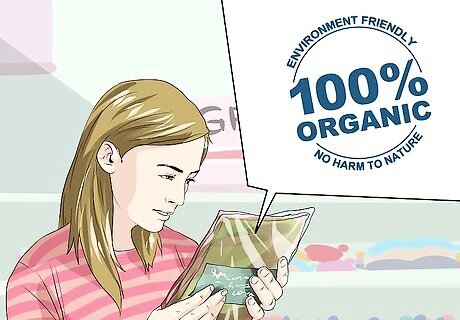
Review the "front of pack" labeling. When you're shopping and are on the lookout for preservatives, there are a variety of places on food packaging that can help you determine whether or not you want to buy that product. 100% organic foods are also not always preservative free. By legal definition, only 95% of the ingredients or additives of a 100% organic food need to be organic. In addition, there are 45 additives that are actually permitted in organic foods. These are there as they have been deemed as "essential" to the safety of the foods. There are some phrases like "all natural" or "natural" that do not really have a legal definition within the FDA. Many food companies use this terminology for marketing and advertising purposes. However, there are plenty of "all natural" foods that contain a variety of added sweeteners, natural flavors and preservatives. Don't get fooled by this type of labeling. After reviewing any labeling claims on the front of the package, you will need to double check and verify with other labels on your food.
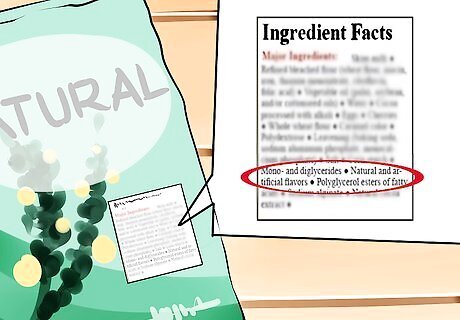
Scan the entire ingredient list. The ingredient list is required and all food manufacturers need to include an ingredient list on their products. This is where you will find out what types, if any, of preservatives are added. The FDA requires all food manufacturers to list every single ingredient contained in a food product on the ingredient label. When reviewing the ingredient list, know that the first ingredient listed is the 1 found in the highest quantity. The last ingredient listed is found in the least or smallest quantities in the product. Preservatives will be listed with a statement about their intended purpose. For instance, the ingredient list may declare “ascorbic acid to improve color retention” or “sulfur dioxide to prevent rotting.” This can give you an idea of why the additive is a part of the food.
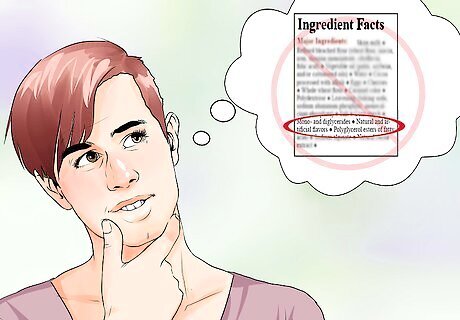
Decide to avoid all additives or only preservatives. Food manufacturers may add a whole variety of different compounds to foods for many reasons. Preservatives are only 1 type of additive that food companies use. In addition to preservatives, you may also notice other types of additives. These can include colorings, vitamins and minerals, added fiber, artificial sweeteners and additives to improve taste (when fat or sugar is removed from a product). Consider the variety of additives and what you really want to avoid and what you consider to be "OK" to include in your diet. For example, many cereals contain added fiber, vitamins and minerals which are beneficial to your health. However, "low-sugar” or “diet" cookies may have some added artificial sweeteners or texturants that you do want to avoid. All additives that are currently in use are approved by the FDA (in the US) and have been deemed safe for human consumption.
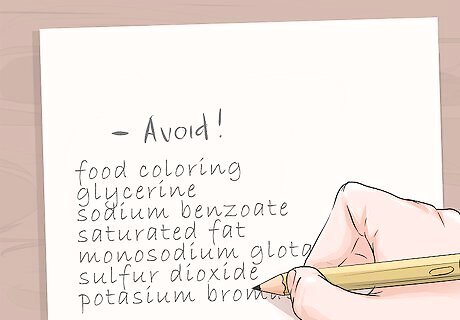
Make note of common preservatives and those you want to avoid. Although there are hundreds of food additives that function as preservatives, some of the most common appear in a wide variety of foods. Once you learn to identify common preservatives you can quickly avoid selecting foods with those preservatives in the future. You can also make a list or note certain additives, colorings or preservatives that you specifically want to avoid. You may also want to make a list of the foods or types of foods they are typically found in and avoid them as well. Some common preservatives and their uses are: Propionates, ascorbic acid, and nitrates are all used to preserve and maintain freshness in foods. Glycerine is a humectant that keeps foods moist and prevents them from drying out. Xantham gum is a popular thickener in foods. Pectin and agar agar are used also used to thicken and stabilize different foods. Modified corn or food starch helps increase the bulk of a food without disturbing its nutritional value.
Shopping for Foods with Fewer Additives
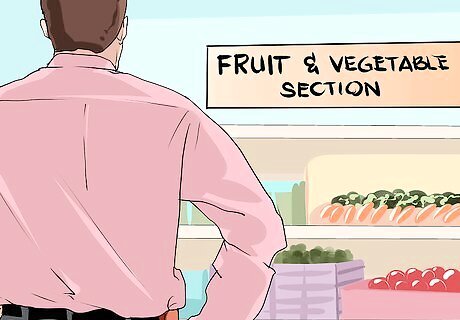
Shop the perimeter of the grocery store. This is a common saying that refers to mainly shopping and purchasing foods from the sections the line a grocery store's walls. This may help you avoid some preservatives. Many health professionals recommend shopping the perimeter of the store as many of these foods are less processed and are typically considered "whole foods." The main sections on the perimeter include: the produce section with fruits and vegetables, the meat/deli counter, the seafood counter, the dairy case and also eggs and the frozen sections. Most foods in the aisles are much more processed and will also most likely have varying amounts of additives.

Choose whole, unprocessed fruits and vegetables. The produce section will have the most whole foods that are minimally processed. Typically fresh fruits and vegetables do not contain. Stock up on these foods to help decrease or avoid additives. Note that not all items in the produce section will be preservative-free. Items like pre-washed, pre-cut fruits and vegetables may have some additives to maintain freshness or color. Raw nuts and seeds are also good options for avoiding preservatives. These may be available in bulk bins near the produce or in a separate bulk section of your store.
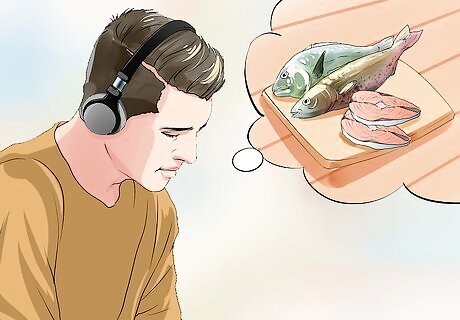
Purchase meat and seafood that is minimally processed. The meat, deli, and seafood counter will have a bigger range of processed items compared to the produce section. Try to stick to meats that are uncooked and in their more natural state, such as raw, whole chicken, raw beef or raw fish. For example, instead of pre-cooked chicken breasts, purchase an entire chicken or chicken breasts raw and prepare them yourself. Or instead of buying turkey deli meat, purchase a turkey breast to roast and slice yourself. Also, don't always forego frozen items. Many times frozen meats and seafood do not contain additives because the freezing keeps them fresh and prevents spoilage.

Be wary of the dairy case. The dairy and egg case is another area that has a wide range of processing and amounts of additives. Eggs typically will be preservative and additive free as you cannot add anything to shelled eggs. They do range in what the chickens are fed and how they were raised. Also, liquid eggs and liquid egg whites may contain additives. You may want to consider avoiding dairy foods with added sugars or flavorings and buy plain or unflavored items. For example, buy plain yogurt instead of fruited yogurts. Cheeses like sliced or shredded cheese may have some additives to prevent the cheese from sticking to itself. Try buying blocks of cheese and slicing or grating cheese yourself. Also, watch out for highly processed cheeses, such as American cheese and Velveeta.
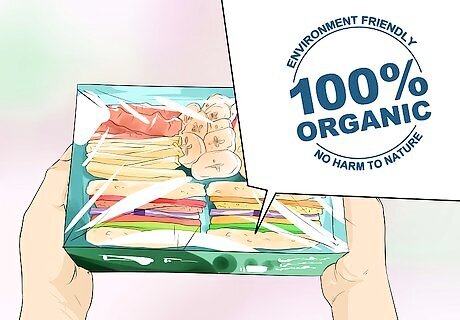
Stick to minimally processed items in the freezer aisles. The freezer aisles can contain very processed foods and minimally processed items. Be smart on what you choose. Many frozen fruits and vegetables are minimally processed and contain little to no additives or preservatives. Make sure you read the label to double check. Frozen fruits and vegetables that come with a sauce or gravy will have additives. Avoid these if you don't want to consume preservatives. Most other frozen foods will be processed and contain additives. Minimize these in your diet or avoid them all together if desired.
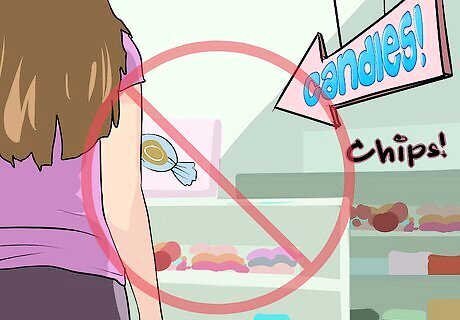
Be mindful when shopping in the aisles. It will be difficult to purchase only foods from the perimeter to the store. When purchasing items from the inner aisles, be careful about what you choose. Try to avoid the aisles that contain candy, chips, crackers, cereals or cookies. These foods are guaranteed to be processed and contain a significant amount of additives. If you're going to buy canned vegetables or meats, choose those with no salt added. Canning does a great job at preserving foods and therefore many of these items contain minimal additives. For items like salad dressing, condiments or sauces, read the labels for those that contain more natural ingredients and less additives. This is a popular request by consumers, so with a little extra time with the labels, you should be able to find appropriate substitutes.
Eating and Preparing Meals without Preservatives

Avoid heavily processed foods. Many heavily processed foods will contain additives. Minimize or avoid these foods to help you reduce the amount of additives you consume throughout the day. Top contenders for highly processed foods include: frozen meals, canned meals, deli meat, breakfast meats and processed meats, condiments, sauces and dressing, sweetened beverages, fast foods and chips/crackers. Many sliced breads contain lots of preservatives as well. Foods that spoil quickly or that are minimally packaged are unlikely to contain preservatives. Buy fresh, unprocessed produce and natural whole foods to reduce the time you spend reading ingredient lists. If a food is processed and has preservatives, look for items that use more natural preservatives like salt, vinegar, sugar, citric acid or ascorbic acid.
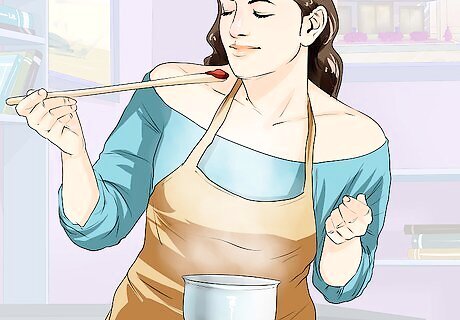
Cook from home and make items from scratch. If you want to get rid of additives in your diet, you'll most likely have to start making some foods from scratch or homemade. Making items yourself allows you to control what goes into your foods and meals. You can control the calories, sugar, fat, salt and the amount of additives your foods contain. If you're coming from a diet that contains large quantities of processed foods or those that contain a lot of additives, slowly start switching over to more homemade foods. Making changes very quickly is generally not easy or sustainable long-term. Some examples of items you can make yourself include: salad dressings, sauces or marinades, bread, your own frozen vegetables or fruit, or your own "freezer meals" made with homemade items.

Make a note of preservative-free products you enjoy. After you have identified foods that are free of chemical preservatives, add them to a “cheat sheet” list to take shopping. This will spare you the trouble of re-reading the ingredient list on future grocery trips. In addition, you can provide this list to family, friends or co-workers who may also be purchasing foods for you. They'll know exactly what to get.
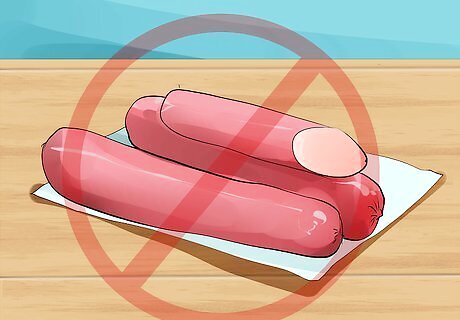
Avoid processed items when you go out to eat. If you choose to go out to eat, you may encounter some highly processed foods or those foods that contain a lot of preservatives. Be choosy about where you go out to eat to avoid this problem. Many restaurants are now advertising they use foods free of preservatives, all organic ingredients or meats without added hormones. Review the restaurant's website to verify if they truly use these types of ingredients. Call the restaurant in advance. Talk to a manager or a cook to find out what types of foods they are using to prepare their meals. Also remember, that even if a restaurant claims to have hormone-free meat, do their other products or foods contain preservatives? Check each ingredient used in their meal prep.




















Comments
0 comment